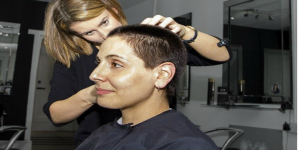
Think about the number one reason why people are overweight nowadays. Overweight people fall into one of two different categories.
Either they have an unhealthy lifestyle – working long hours, eating out all the time, not getting enough exercise – or they simply eat too much, often in a compulsive way.
This type of eating – eating when one isn’t hungry, for example, or eating for emotional reasons rather than physical hunger – is really a type of addiction. It should be understood as an addiction, and it often is.
For example, the group Overeaters Anonymous functions on many of the same principles as AA or other twelve step programs. Excessive eating is treated like an addiction because that’s exactly what it is.
But if that’s the case, it’s easy to see why this addiction might be harder to treat than some others. The way to deal with an addiction is to stay away from the behaviour that’s out of control – alcoholics can’t touch alcohol, for example. The idea is to not do it at all until the addiction becomes a thing of the past – in fact, for many addicts, they can never indulge in their addictive behavior again, not even once.
With food addiction, though, that’s obviously impossible. People have to eat – there’s no getting away from it. That’s why food addiction, though it’s an addiction to a non-lethal substance, may be the hardest of all to deal with. And that’s also why companies such as Slim-fast, who produce and market meal replacements for people to use while dieting to lose weight, actually do succeed in helping some people.
The idea behind meal replacements is that you don’t really eat at all for a good part of the day – instead, you have a special shake or other product that gives you all the nutrients you need, and stops you from feeling hungry. This works in two ways: first, it controls the calories you take in, because the meal replacements are quite low calorie. Second, it breaks the cycle of addictive behavior because you’re not really eating. You can get away from the behavior much as an alcoholic can (and must) get away from alcohol, and that gives you a better chance of breaking the addictive process.
Though most meal replacement plans do recommend that you eat one ‘normal’ meal per day, some people who are serious about losing weight don’t do even that. That’s precisely how Oprah Winfrey once lost a lot of weight – about fifty pounds. She said that she found it easier not to eat at all (subsisting on meal replacement shakes and bars) than to control her eating. When you know that you won’t be eating ‘real food’ at all for a while, it takes the guesswork out of it. Everything becomes very straightforward, and it’s a fact that many people have lost weight using this method of weight loss.
There are drawbacks, though. For one thing, while a weight loss program is supposed to teach you about how to eat for the rest of your life – to establish healthy habits, in other words – using meal replacements clearly doesn’t do so. Once you go back to eating real food, you might find that your problems with controlling your food intake are still there. Though you will have lost weight, you are more likely to gain it back if you haven’t learned healthy eating habits.
Also, there’s a danger that some people will keep on using the meal replacements for extended periods of time, just because it’s easier and more convenient. Thought they re designed to give you a minimum level of calories and nutrition, meal replacement bars cannot substitute for real food over an extended period.
However, if you know or suspect that your problem with food resembles an addiction or compulsion, it may be worth your while to think about using meal replacements for a while in order to lose some weight. Try to make the time you spend using them as productive as possible, though. Really come to terms with your past behaviour, and learn what it feels like to be full but not stuffed. Figuring out the answer to these and other aspects of healthy eating will help make your weight loss permanent.








